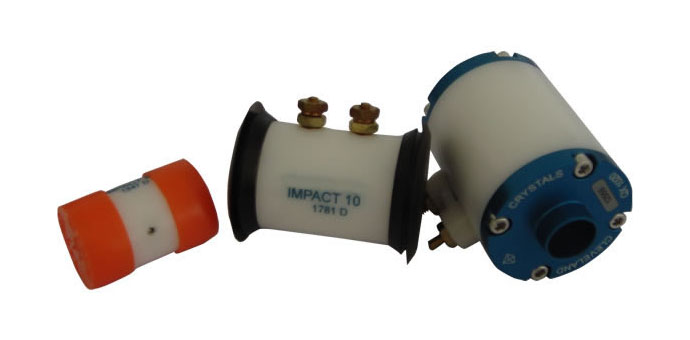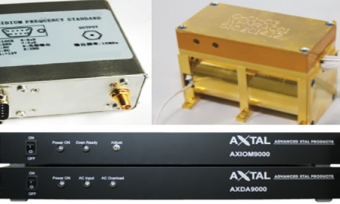| Pictures | Materials / Sizes | Features / Applications |
 |
LGS Series Electro – Optic Pockel Cell Q Switch Active NLO Material
A new kind of EO Q-switch is designed by use of a La3Ga5SiQ14 (LGS) crystal. LGS crystal is one kind of optically active NLO material with very high damage threshold (about 9 times as that of LN), excellent E-O coefficient, high temperature stability (better than quartz), the Q-switch is based on the consideration that the total rotation angle of the polarization plane is zero, whereas the polarized wave propagates through the Pockels cell back and forth, with the polarization plane gyration and electro-optic effect existing simultaneously, therefore it is widely used in E-O components such as E-O modulator, Q-switch, etc. |
LGS -based Q-switch (Pockels cell);
For wavelengths up to 3.2μm; Transmitted wave front distortion: < l/4; Damage threshold: > 900MW/cm2 (@1064nm, 10ns, typical, not guaranteed); LGS available for medium power systems, partially take place of DKDP and LiNbO3 series Q-switches The LGS (LG-EO-Q) series Q-switch (Pockels Cell) is a practical electro-optic device that can be used in medium output energy lasers to partially take the place of DKDP and LiNbO3 series Q-switches |
 |
SGS Single Crystal BBO Pockels Cells UV Transmission Low Acoustic Noise
BBO is one of the electro-optic material choices for high average power E-O Q switch applications. BBO has significant advantages over other materials in terms of laser power handling abilities, temperature stability, and substantial freedom from piezoelectric ringing. Because it relies on the electro optic effect, switching time – aided by the low capacitance of the E-O Q switch is very fast |
High repetition rate
High peak power damage resistance Low absorption UV transmission Low acoustic noise The wide transparency range of BBO allows it to be used in diverse applications |
 |
1064nm Single Crystal BBO NLO Pockels Cell Q Switch for Cavity Dumping
Beta Barium Borate (BBO) crystal is a Nonlinear Optical Crystal with a combination of unique features: wide transparency region, broad phase-matching range, large nonlinear coefficient, high damage threshold, wide thermal acceptance bandwidth and high optical homogeneity |
These Pockels cell have different functions to meet different needs of customers in various fields
High repetition rate DPSS Q-switch High repetition rate regenerative amplifier control Cavity dumping Beam chopper |
 |
1064nm DKDP Pockels Cell Q Switch High Damage Threshold
The DKDP crystal is a uniaxial crystal with excellent optical quality with an extinction ratio of > 2000:1 (measured using a 632nm He-Ne laser) with a wave front distortion of 98%. The DKDP electro-optic Q-switching capacitor is small (about 3-5pF), so the rise time is short (< 0.5ns), and a narrow pulse width pulse laser can be output during Q-switching. Compared with the widely used electro-optic crystals on the market, DKDP crystals have higher damage thresholds; the damage threshold is > 1GW/cm2 under optical conditions of 10ns pulse width, 1064nm wavelength and repetition frequency 10Hz |
High deuteration (> 98%) DKDP; No static birefringence
No photorefractive damage; Resistant to environmental temperature Sealant and adhesive free; High extinction ratio High damage threshold; Low λ/4 Voltage; Single pass optical transmission Applications: Laser systems with large caliber, high power and narrow pulse width. They are among the optimal E-O Q-switches used in pulse laser systems, including: OEM laser systems; Medical/cosmetic lasers; Versatile R&D laser platforms; Military & aerospace laser systems |
Frequency Control Products





Reviews
There are no reviews yet.